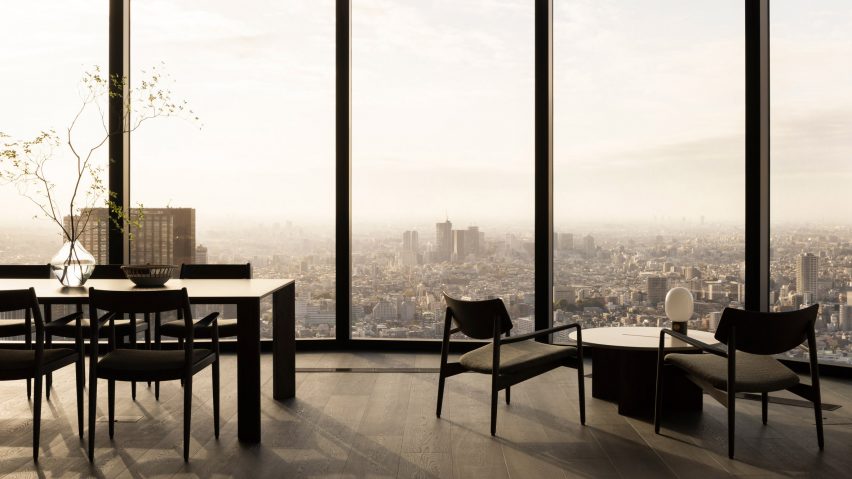
Keiji Ashizawa and Norm Architects design tactile interiors for "hotel in the sky"
Japanese designer Keiji Ashizawa and Danish studio Norm Architects have unveiled their design for the Bellustar Tokyo hotel, which aims to evoke a sense of nature in the middle of Tokyo's urban Shinjuku district.
The two studios worked together to design interiors for five penthouse suites as well as hospitality spaces for the top floors of the Bellustar Tokyo, 200 metres above the ground in Shinjuku's Kabukicho tower.
Norm Architects and Keiji Ashizawa Design had to take the city views from the building into account when designing the hotel rooms, which are spread over three levels from the 45th to the 47th floor.
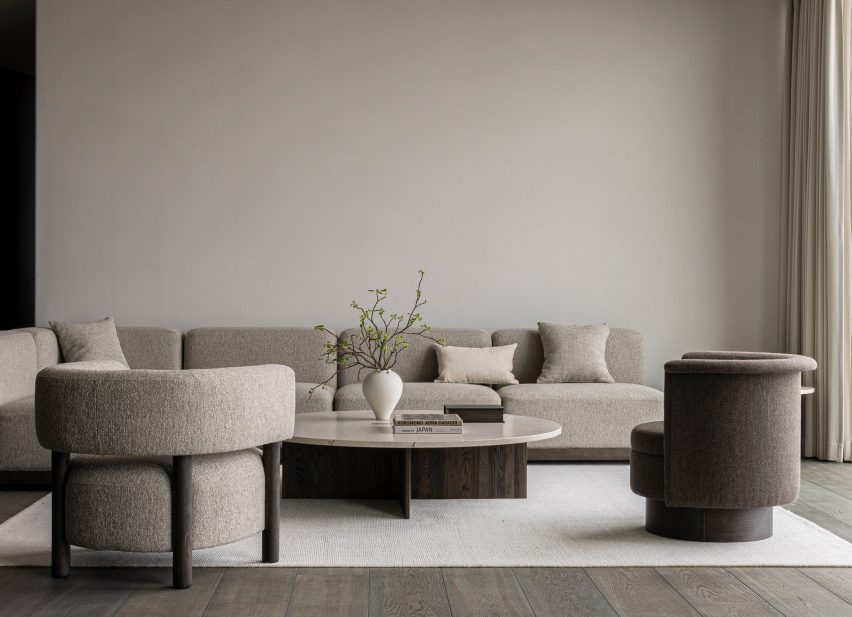
"I would say that it is the tallest hotel I have worked on," Ashizawa told Dezeen, describing it as "a quiet hotel in the sky of Shinjuku".
"Since there are no nearby buildings at this elevation, there was no need to be concerned about privacy, and it feels surreal that the views from all the windows are almost always spectacular," he added.
"That is why the relationship between views from the windows and the space is indeed very simple."
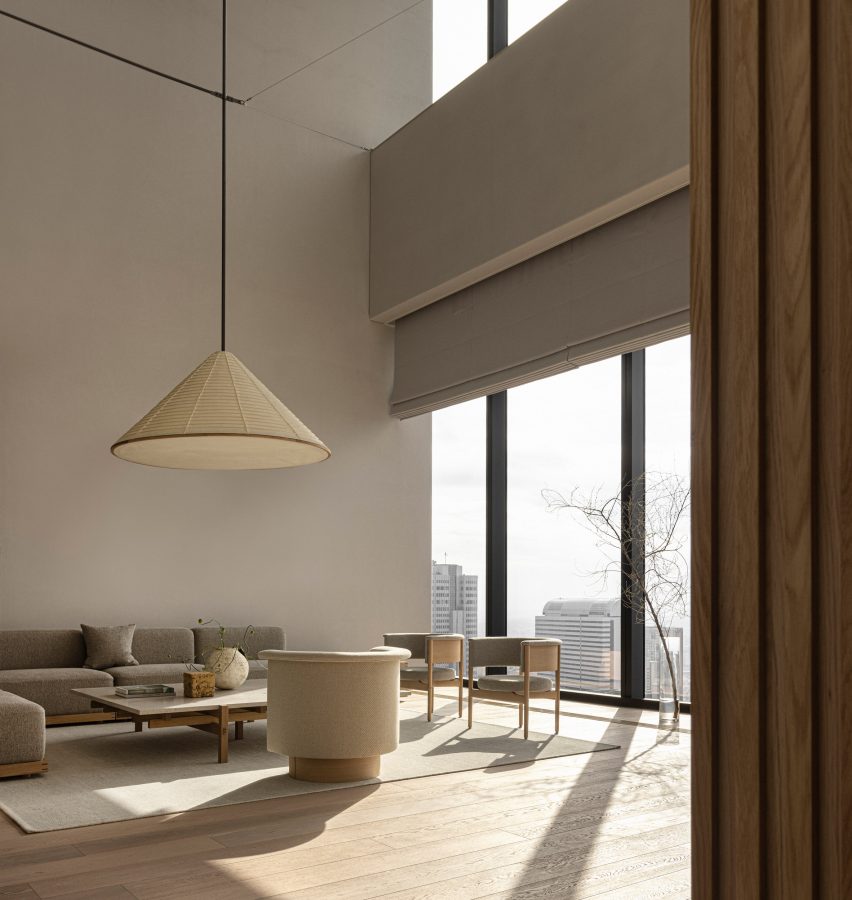
Both studios were involved in the spatial organisation of the five penthouse suites as well as the placement of the hotel's three restaurants, its top-floor spa and a penthouse lounge designed for guests to enjoy the setting sun.
Ashizawa and Norm Architects drew on their signature use of natural materials and muted palettes to create the interiors for the five guestrooms.
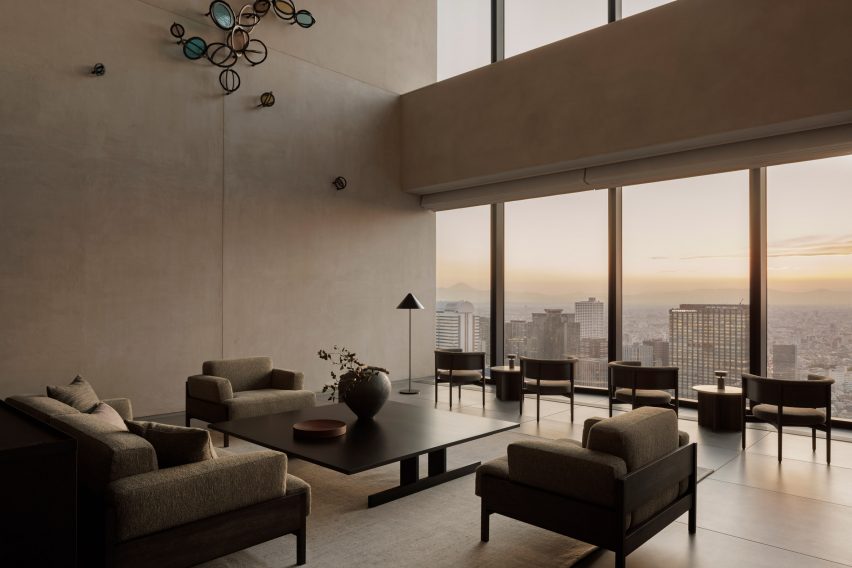
These were informed by the "beauty of the four seasons in Japan" and have names such as Hana (wind) and Tsuki (moon).
The rooms have been furnished with pieces by the studios' Karimoku Case Study series for wood furniture company Karimoku and feature a mix of natural materials.
"The use of organic forms and natural materials like wood and stone can be seen as an antidote to the city that serves as artworks through the grand windows," the studios said.
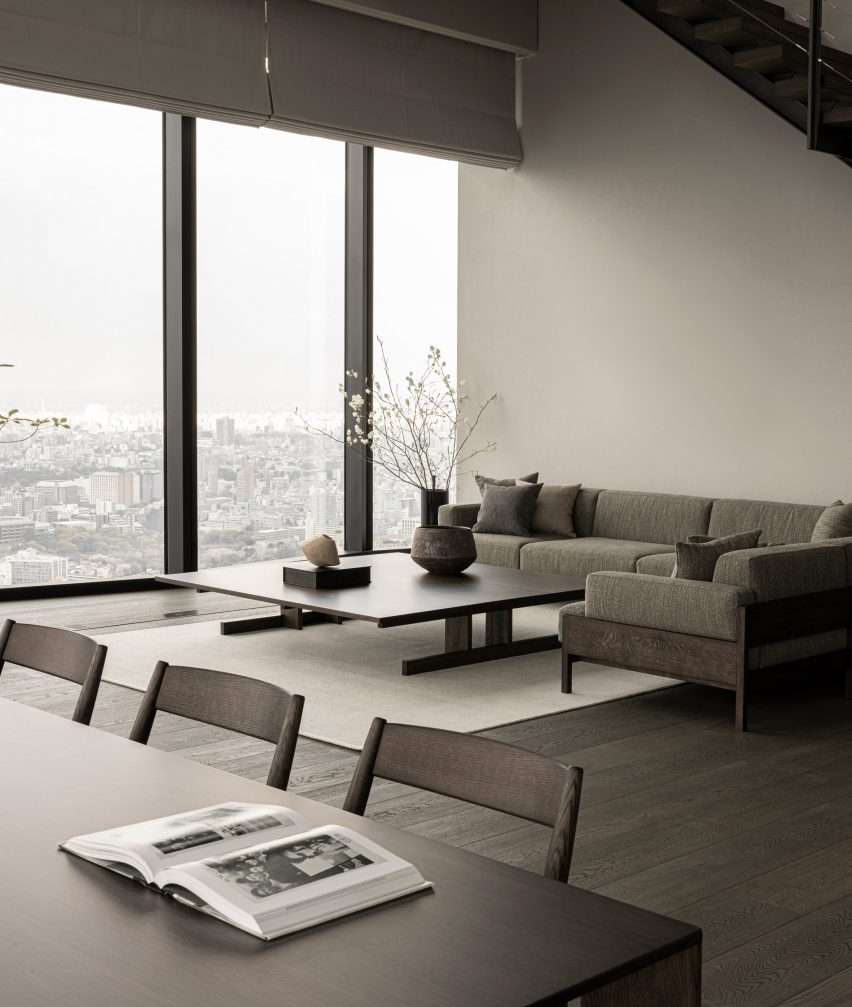
Among the tactile details in the guest rooms are stone-topped bedside tables and wood-panelled headboards.
"The idea is to create a balance of hardness and softness against the large area of the room that will be covered with textiles," Ashizawa said.
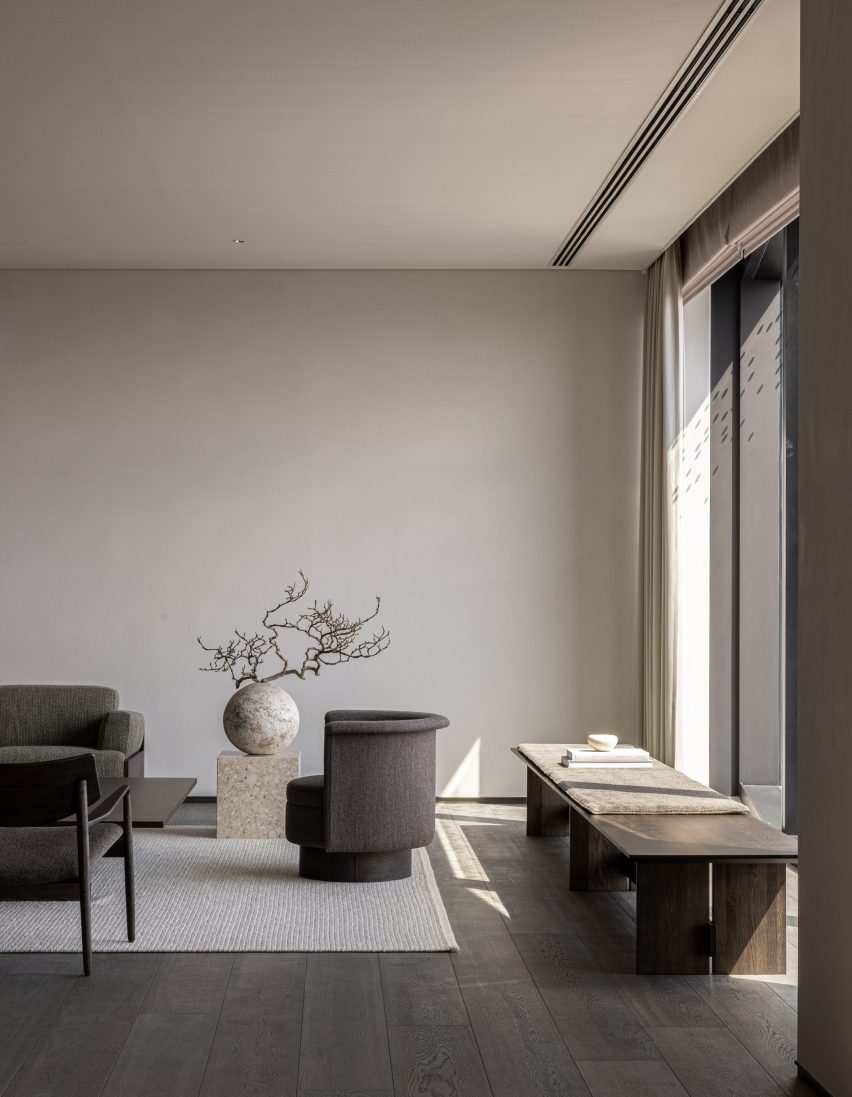
As the guestrooms have floor-to-ceiling windows, the bedrooms and living rooms feature benches and curtains that were added "to create a little distance from the view to make the space feel more comfortable," Ashizawa explained.
A colour palette of mainly white, ivory and gray was used throughout the Bellustar Tokyo, which is a Pan Pacific hotel, with darker colours creating contrast in some of the spaces.
"The color palette is what we and Norm Architects consider to be the colors of nature, and we hope to create a sense of richness by evoking nature in Shinjuku, the most Tokyo-like place in the city," Ashizawa said.
"As an antidote to the city, we have tried to listen to nature's story of artistry, optimism, imperfection, and impermanence, and bring these poignant qualities into the work," Norm Architects added.
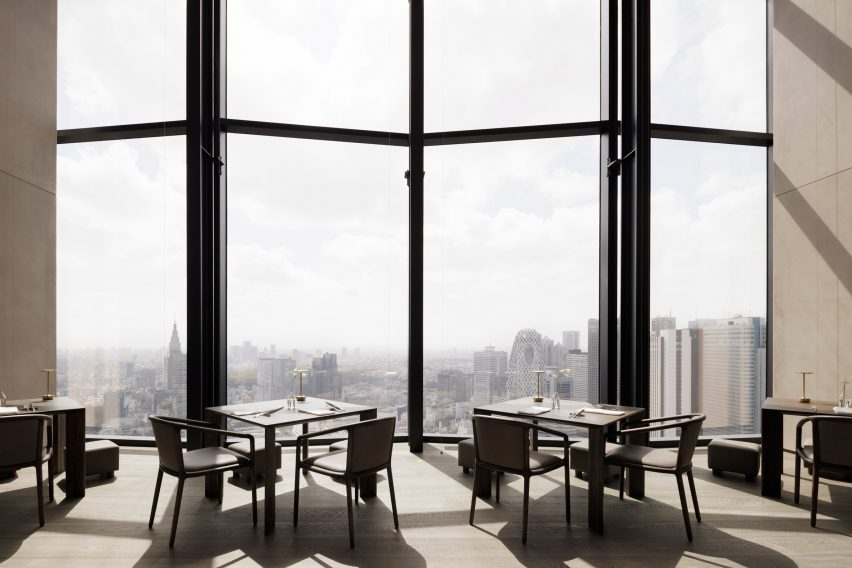
Ashizawa also used tiles and handcrafted details to create more tactile walls in some areas of the hotel, including in the main restaurant, which has custom-made tiles from Japan.
The Bellustar Tokyo features three restaurants: the main restaurant and bar, which was designed solely by Ashizawa, as well as a sushi restaurant and a teppanyaki restaurant.
Here, the studios worked with material palettes that include wood and brick.
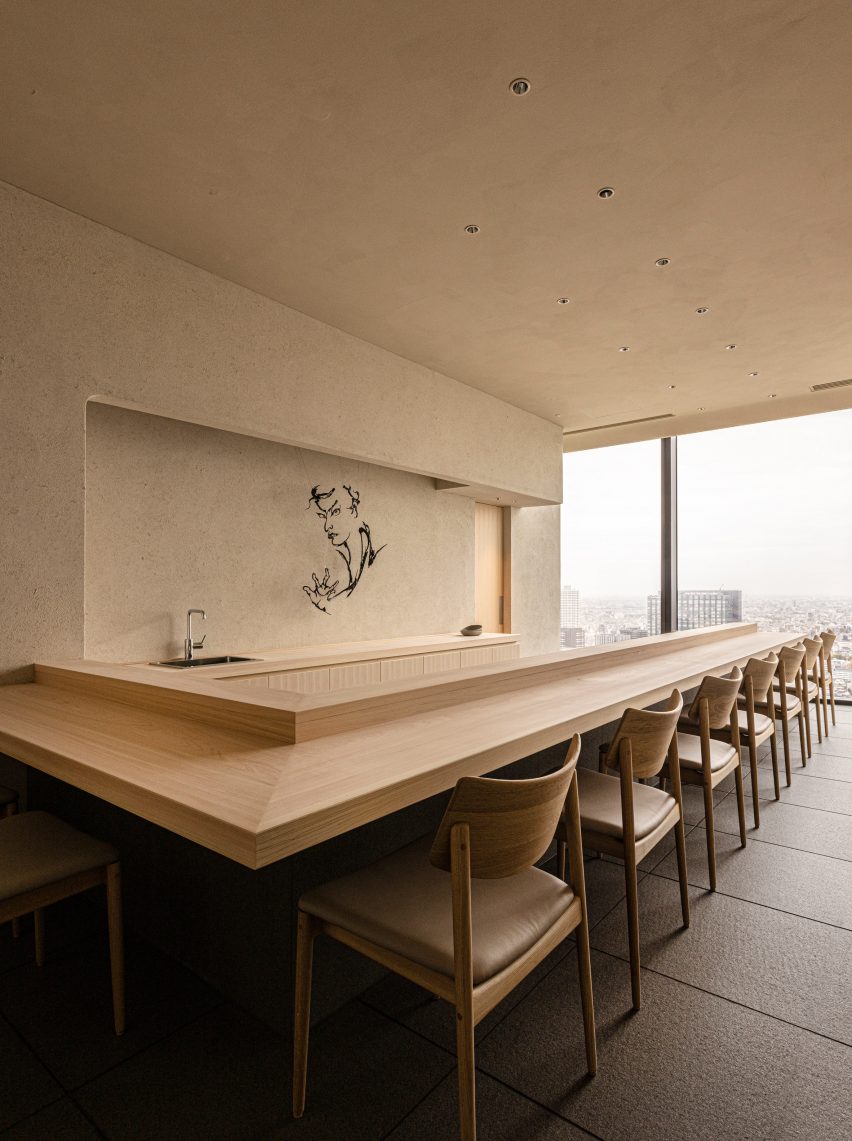
"The sushi and teppanyaki restaurants are designed to feel like small hidden and intimate traditional city restaurants but transformed into contemporary places on the top of Tokyo," Norm Architects said.
"Both restaurants have their own unique character and material palette where the sushi restaurant is bright and works with hinoki [cypress wood], the teppanyaki place is dark and dominated by dark bricks in creative patterns."
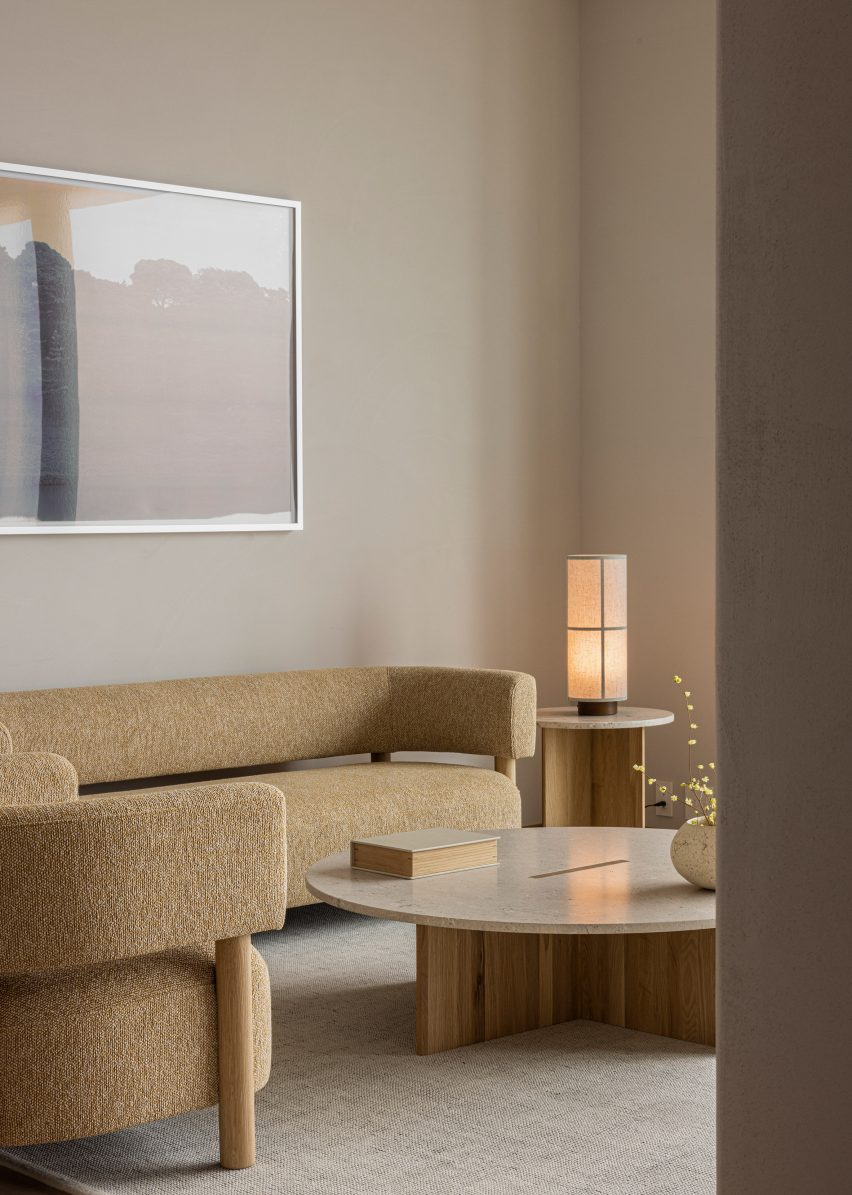
The studios hope that by using natural materials and muted colours, the Bellustar Tokyo will function as a refuge from the busy city.
"We hope that the guests of the hotel will first experience the vibrant atmosphere of the Shinjuku Kabukicho district of Tokyo, and then enjoy the serenity of the penthouse interior – as if the lively Tokyo scenery were like a Zen temple's karesansui (dry landscape garden)," Ashizawa said.
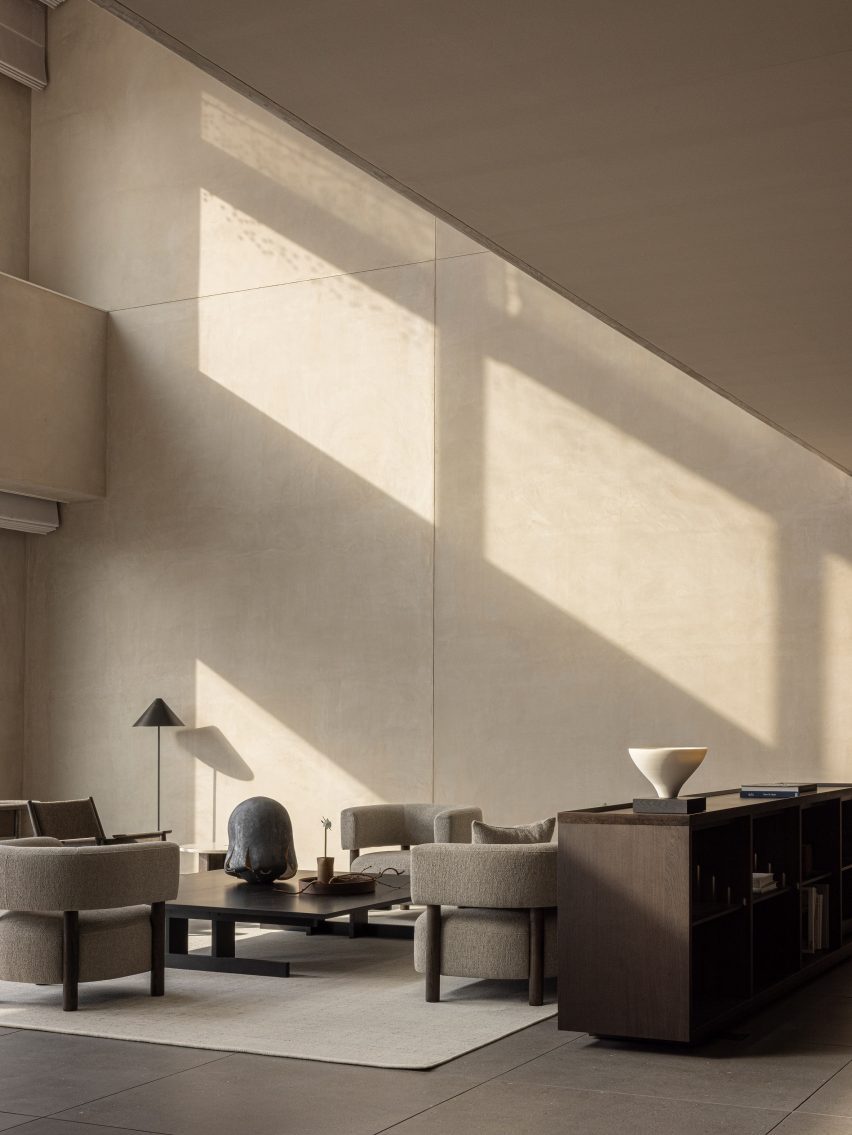
Previous projects by Keiji Ashizawa Design include the Hiroo Residence overlooking Tokyo's Arisugawanomiya Memorial Park and the Kyoto showroom for Karimoku.
Norm Architects recently created a headquarters for children's brand Liewood and an inside-out greenhouse restaurant in Sweden.
Project credits:
Interior architecture: Keiji Ashizawa Design: Keiji Ashizawa, Mariko Irie, Kenji Kawami, Yuichiro Takei. Norm Architects: Jonas Bjerre-Poulsen, Peter Eland, Frederik Werner
Bellustar penthouse (five penthouses): Keiji Ashizawa Design and Norm Architects
Bellustar restaurant and bar: Keiji Ashizawa Design
Spa Sunya: Keiji Ashizawa Design
Furniture, fixtures and equipment: Keiji Ashizawa Design and Norm Architects